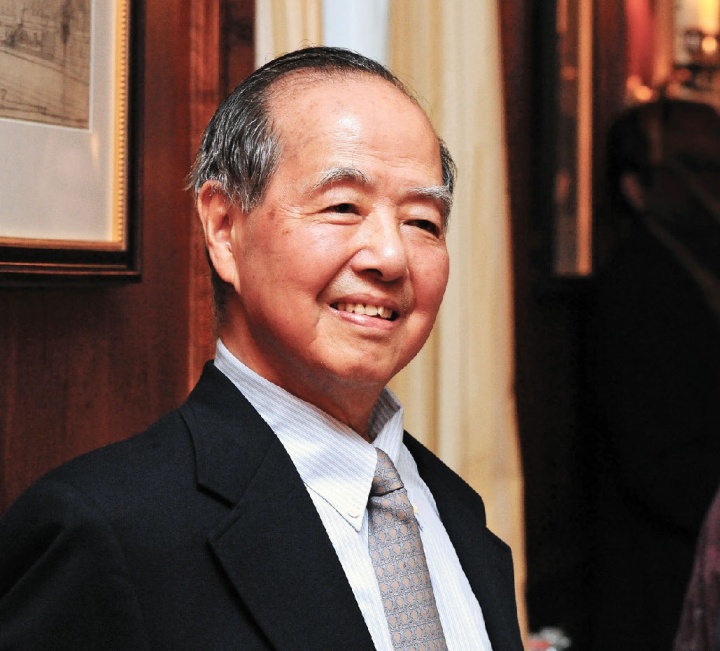Columbia College | Columbia University in the City of New York
In Memoriam: Tsung-Dao Lee, University Professor Emeritus and Nobel Prize Winner in Physics

Eileen Barroso
Lee was barely 31 when he won the Nobel, the second-youngest scientist to receive the honor; his collaborator Chen Ning Yang was a co-recipient. Robert Oppenheimer once praised Lee as one of the most brilliant theoretical physicists of the time, whose work showed “remarkable freshness, versatility and style.”
A world-renowned scientist, educator and longtime member of Columbia’s Department of Physics, Lee was among the leading physicists of his generation, a towering figure who expanded the understanding of the laws of physics and, in particular, the interactions among the subatomic particles out of which our universe is constructed.
Lee was born on Nov. 24, 1926, in Shanghai, the third of six children; he said he grew up “in a family of learning.” His father was a merchant in the chemical industry, and his mother was a homemaker who enjoyed finding books to add to the family library. Lee was in high school when war broke out between China and Japan, forcing him to abandon his studies; in 1943, despite not having a high school diploma, Lee was admitted to National Chekiang University (now Zhejiang University). He started as a student in chemical engineering and shifted to physics when his professors discovered his talent in that field.
The continuing war with Japan forced Lee in 1945 to switch to National Southwestern Associated University in Kunming, where his future collaborator Yang had also studied. While there he was nominated for a Chinese government fellowship to study in the United States. By 1946, Lee was at the University of Chicago, studying under Enrico Fermi, another legendary Columbian and Nobel winner. Lee earned a Ph.D. in 1950 with a dissertation on the hydrogen content of white dwarf stars.
Following stints at Princeton, UC Berkeley and the Yerkes Observatory in Wisconsin, Lee joined Columbia as an assistant professor in 1953. He was named full professor three years later, the youngest person at the time to receive tenure at Columbia. He taught at Columbia until his retirement at 84 in 2011 as a University Professor and the Enrico Fermi Professor of Physics.
As a physicist, Lee is best known for his and Yang’s discoveries related to the law of conservation of parity, then a widely accepted theory that suggested that two physical systems that are mirror images of each other must behave in the same way.
In 1956, Lee challenged the law, and called on Yang, whom he had worked with at Chicago. After reviewing all the studies and experiments involving the decay of specific particles called K mesons, the two were able to conclude that in nature, identical particles can in fact differ — in effect, some are right-handed and others are left-handed.
That fall, Lee and Yang published their theory in the journal Physical Review. A groundbreaking experiment by physicist Chien-Shiung Wu involving the decay of cobalt atoms was performed later that year, confirming that Lee and Yang were right. They were awarded the Nobel the following year.
Outside the University, Lee was founding director of the Riken-Brookhaven National Laboratory Center from 1997 to 2003. As a leading U.S. scientist, he was influential in initiating important large-scale projects; among the most significant was the Relativistic Heavy Ion Collider, which provided some of the first evidence for the quark gluon plasma, a state of matter that dominated the universe a few microseconds after its creation.
Lee also helped usher in a new era of international collaboration in scientific research and education between the U.S. and China. He helped to establish important academic programs, including the first undergraduate school and the first postdoctoral educational program in China. He also created the China-U.S. Physics Examination and Application system, under which more than 900 of the top Chinese undergraduates in physics came to the U.S. for Ph.D. studies.
For his contributions to international cooperation in science research in the U.S., China, Japan and Italy, Lee was awarded some of those nations’ highest distinctions. His name is affixed to two theorems, the Lee Model and the Kinoshita-Lee-Nauenberg theorem, and he also developed important theories on black holes and dark matter. He received the Albert Einstein Award in Science, the Galileo Galilei Medal and the G. Bude Medal, as well as honorary doctorates and titles from organizations around the world. A minor planet (3443 Leetsungdao) is named for him.
In 1950, Lee married Jeannette Hui-Chun Chin. She died in 1996. He is survived by his sons, James and Stephen; brother, Xuedao Li; sister, Yayun Li; seven grandchildren; and a great- grandson. Lee became a U.S. citizen in 1962.
— Lisa Palladino
Issue Contents
Published three times a year by Columbia College for alumni, students, faculty, parents and friends.
Columbia Alumni Center
622 W. 113th St., MC 4530, 6th Fl.
New York, NY 10025
212-851-7852
cct@columbia.edu
Columbia Alumni Center
622 W. 113th St., MC 4530, 4th Fl.
New York, NY 10025
212-851-7488
ccalumni@columbia.edu

